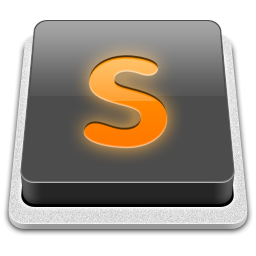How to Build a Design System from Scratch
Start by identifying the core problems your design system should solve, such as inconsistent UI or slow development cycles, and align with stakeholders on success metrics. 2. Conduct a UI audit to inventory existing components, identify redundancies, and uncover patterns. 3. Establish foundational design tokens including color, typography, spacing, icons, and shadows with semantic, scalable naming. 4. Incrementally build reusable Figma components for high-usage elements like buttons and inputs, define their states, usage guidelines, and collaborate with developers for feasibility. 5. Set governance with clear ownership, contribution processes, versioning, and feedback loops documented in a shared knowledge base. 6. Partner with engineering to implement tokens and components in code using CSS variables, UI libraries, or tools like Style Dictionary, ensuring accessibility and test coverage. 7. Measure adoption, track reduced design-dev time and improved consistency, then iterate based on data. Starting small and progressing iteratively ensures long-term success.
Building a design system from scratch might sound overwhelming, but it’s one of the most impactful things you can do for product consistency, team efficiency, and long-term scalability. Whether you're a solo designer, part of a small startup, or leading a growing design team, here’s a practical guide to get you started — no fluff, just what actually works.
1. Start with the Problem, Not the Tools
Before you open Figma or write a single line of code, ask: Why do we need a design system?
Common pain points include:
- Inconsistent UI across products or teams
- Slow design and development cycles
- Ramp-up time for new hires
- Difficulty maintaining accessibility or responsiveness
Pinpoint your biggest frustrations. That’s where your design system should deliver value first.
Tip: Talk to designers, developers, and product managers. Find alignment on what “success” looks like. Is it faster iteration? Fewer bugs? Better user experience?
2. Audit What You Already Have
You likely already have some reusable components — buttons, forms, navigation bars — even if they’re scattered or inconsistent.
Do a UI inventory:
- Collect screenshots of common elements across your product
- Map out variations (e.g., 12 different button styles)
- Identify patterns and outliers
This helps you:
- Avoid rebuilding everything from scratch
- See what’s working and what’s causing confusion
- Prioritize standardization (e.g., pick one primary button style)
Use a tool like Figma, Miro, or even a spreadsheet to organize your findings.
3. Define Foundational Elements First
Start small and focus on the basics — the atomic pieces that everything else is built on.
Core foundations include:
- Color palette: Define primary, secondary, error, success, and neutral colors. Include semantic names (e.g., “error-red” instead of “red-500”) so they’re context-aware.
- Typography: Set type scale (heading 1 to body text), font families, and line heights.
- Spacing system: Use a consistent scale (e.g., 4px or 8px base) for margins, padding, and layout.
- Icons: Choose a consistent set and define sizing and stroke rules.
- Shadows and radii: Standardize card corners and elevation effects.
These become your “design tokens” — abstract values that can be shared across design and code.
Pro tip: Name things intentionally. Use clear, scalable naming (e.g., “spacing-md” or “radius-lg”) instead of arbitrary values.
4. Build a Component Library Incrementally
Now, start creating reusable components in Figma (or your design tool). But don’t try to build everything at once.
Start with high-impact, frequently used components:
- Button
- Input field
- Checkbox/Radio
- Card
- Modal
- Navigation bar
For each:
- Define states (default, hover, disabled, loading)
- Document usage guidelines (when to use primary vs. secondary button)
- Add annotations or comments in Figma
Use Figma’s auto-layout and variants to make components flexible and easy to use.
Important: Collaborate with developers early. Make sure components can be implemented in code. A design system fails when it lives only in Figma.
5. Establish Governance and Contribution Rules
A design system isn’t a one-time project — it’s a living product.
Set up:
- Ownership: Who maintains it? (e.g., a core design systems team or rotating squad)
- Contribution process: How do people request new components or changes?
- Versioning: How do you communicate updates without breaking things?
- Feedback loop: Regular syncs with design and dev teams
Document everything in a shared space (Notion, Confluence, or a dedicated website).
6. Integrate with Development
Work with engineers to translate design tokens and components into code.
Options include:
- CSS variables for design tokens
- A UI component library (React, Vue, etc.)
- Tools like Style Dictionary to sync values across platforms
Ensure the codebase is:
- Well-documented
- Accessible (a11y compliant)
- Tested (visual regression, unit tests)
Publish it as a package (e.g., via npm) so teams can easily install and update.
7. Measure and Iterate
Track how your system is being used:
- Adoption rate across teams
- Reduction in design/dev time
- Bug reports related to UI consistency
Use this data to prioritize improvements.
Remember: A design system grows with your product. It’s okay to start small. A single button, done right, is a foundation.
Building a design system isn’t about perfection — it’s about progress. Start with real problems, involve your team, and build one piece at a time. The consistency and speed you gain will compound over time.
Basically, just get started. The rest will follow.
The above is the detailed content of How to Build a Design System from Scratch. For more information, please follow other related articles on the PHP Chinese website!

Hot AI Tools

Undress AI Tool
Undress images for free

Undresser.AI Undress
AI-powered app for creating realistic nude photos

AI Clothes Remover
Online AI tool for removing clothes from photos.

Clothoff.io
AI clothes remover

Video Face Swap
Swap faces in any video effortlessly with our completely free AI face swap tool!

Hot Article

Hot Tools

Notepad++7.3.1
Easy-to-use and free code editor

SublimeText3 Chinese version
Chinese version, very easy to use

Zend Studio 13.0.1
Powerful PHP integrated development environment

Dreamweaver CS6
Visual web development tools

SublimeText3 Mac version
God-level code editing software (SublimeText3)
 Why is my image not showing up in HTML?
Jul 28, 2025 am 02:08 AM
Why is my image not showing up in HTML?
Jul 28, 2025 am 02:08 AM
Image not displayed is usually caused by a wrong file path, incorrect file name or extension, HTML syntax issues, or browser cache. 1. Make sure that the src path is consistent with the actual location of the file and use the correct relative path; 2. Check whether the file name case and extension match exactly, and verify whether the image can be loaded by directly entering the URL; 3. Check whether the img tag syntax is correct, ensure that there are no redundant characters and the alt attribute value is appropriate; 4. Try to force refresh the page, clear the cache, or use incognito mode to eliminate cache interference. Troubleshooting in this order can solve most HTML image display problems.
 How to use radio buttons in HTML5?
Jul 21, 2025 am 01:08 AM
How to use radio buttons in HTML5?
Jul 21, 2025 am 01:08 AM
The key to using radio buttons in HTML5 is to understand how they work and correctly organize the code structure. 1. The name attribute of each radio button must be the same to achieve mutually exclusive selection; 2. Use label tags to improve accessibility and click experience; 3. It is recommended to wrap each option in a div or label to enhance structural clarity and style control; 4. Set default selections through the checked attribute; 5. The value value should be concise and meaningful, which is convenient for form submission processing; 6. The style can be customized through CSS, but the function needs to be ensured to be normal. Mastering these key points can effectively avoid common problems and improve the effectiveness of use.
 Headless CMS and Static Site Generation (SSG) with Astro
Jul 26, 2025 am 07:31 AM
Headless CMS and Static Site Generation (SSG) with Astro
Jul 26, 2025 am 07:31 AM
Use headless CMS in conjunction with Astro's static site generation (SSG) to build high-performance, content-driven websites. 2.Astro gets content from headless CMS (such as Sanity, Contentful, Strapi, WordPress, or DatoCMS) through APIs and pre-renders as static pages. 3. Use getStaticPaths() to generate the page path, obtain data through CMSAPI calls, and separate the content from the front-end. 4. Advantages include excellent performance (fast loading, SEO-friendly), friendly editing experience, architectural flexibility, high security and scalability. 5. Content updates require rebuilding of the site, and you can use CMSwebhook to touch
 Is the tag still used in HTML5?
Jul 21, 2025 am 02:47 AM
Is the tag still used in HTML5?
Jul 21, 2025 am 02:47 AM
Yes, it is part of HTML5, but its use has gradually decreased and is controversial. Used to combine the main title with the subtitle so that only the highest level of titles are identified in the document outline; for example, the main title and subtitle can be wrapped in to indicate that they are only auxiliary titles rather than independent chapter titles; however, reasons why they are no longer widely used include: 1. The browser and screen readers are inconsistent support for them, 2. There are simpler alternatives such as using CSS to control styles, 3. The HTML document outline algorithm is not widely supported; despite this, it can still be considered in websites or documents with high semantic requirements; while in most cases, developers tend to use a single, manage styles through CSS and maintain clear title levels.
 H5 Web MIDI API for Advanced Control Surfaces
Jul 19, 2025 am 03:04 AM
H5 Web MIDI API for Advanced Control Surfaces
Jul 19, 2025 am 03:04 AM
To use WebMIDIAPI to build an advanced control interface, you must first obtain device permissions, request authorization through navigator.requestMIDIAccess() and process input and output devices; secondly, listen or send MIDI messages, such as listening to knob operations through input.addEventListener, and send LED control instructions through output.send; you must also adapt to different controllers, establish configuration files or provide user-defined mapping functions; finally pay attention to development skills such as real-time response, error handling, debugging tools and channel number matching.
 The Importance of Semantic HTML for SEO and Accessibility
Jul 30, 2025 am 05:05 AM
The Importance of Semantic HTML for SEO and Accessibility
Jul 30, 2025 am 05:05 AM
SemanticHTMLimprovesbothSEOandaccessibilitybyusingmeaningfultagsthatconveycontentstructure.1)ItenhancesSEOthroughbettercontenthierarchywithproperheadinglevels,improvedindexingviaelementslikeand,andsupportforrichsnippetsusingstructureddata.2)Itboostsa
 Using Bootstrap 5 with HTML5
Jul 15, 2025 am 12:26 AM
Using Bootstrap 5 with HTML5
Jul 15, 2025 am 12:26 AM
Using Bootstrap5 with HTML5 for front-end development is very direct and efficient. 1. Introducing Bootstrap5 can be achieved through CDN, local files or construction tools. It is recommended that beginners use CDN; 2. Combining HTML5 semantic tags such as , , etc. to improve structural clarity and SEO-friendliness, and paired with Bootstrap's layout classes to achieve responsive design; 3. Using Bootstrap5 components such as modal boxes, navigation bars, etc. to enhance interactive functions, pay attention to ensuring that JS files are correctly introduced and initialized. Once you master these core points, you can quickly build modern and responsive web projects.
 Differentiating HTML5 localStorage and sessionStorage
Jul 15, 2025 am 03:12 AM
Differentiating HTML5 localStorage and sessionStorage
Jul 15, 2025 am 03:12 AM
The core difference between localStorage and sessionStorage lies in data persistence and scope. 1. Data life cycle: localStorage data is stored for a long time unless manually cleared, and sessionStorage data is cleared after closing the tab; 2. Scope difference: localStorage is shared among all tabs on the same website, and sessionStorage is stored independently; 3. Usage scenario: localStorage is suitable for saving long-term data such as user preferences and login status, sessionStorage is suitable for temporary form data or single session process; 4. API consistency: two operation methods







